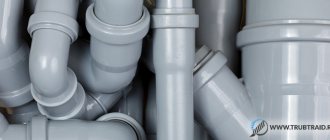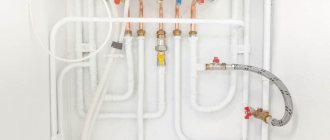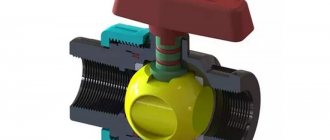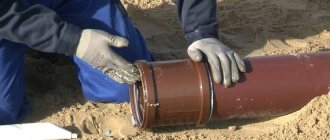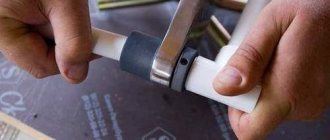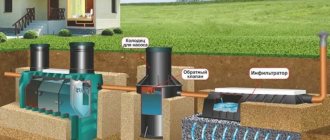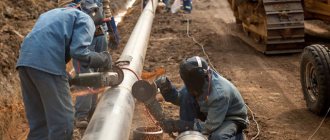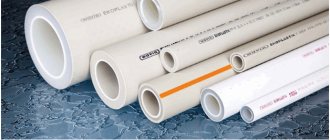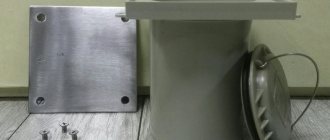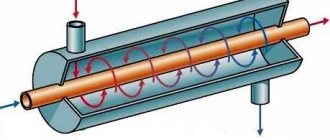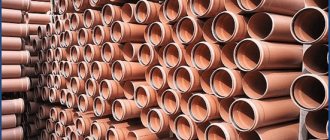The manufacturing process of ceramic-based sewer pipes is carried out using refractory clay, and their formation is made possible due to the functionality of the extruder. Subsequently, the products enter the oven, the temperature of which can reach 1300 °C. Next, the inner surface of the cylindrical structures is processed using clay glaze. At the last stage, the pipes are placed in a drying chamber, where at a temperature of 80 °C they are transformed into finished products.
What kind of pipes are these?
They are hard tubular products made of baked clay, characterized by particular strength and a smooth surface. They are not afraid of corrosion, exposure to chemical reagents, and even the influence of temporary factors.
As practice has shown, they can serve for more than 100 years.
A little history
The age of manufacture of the oldest ceramic sewer found in Athens was determined by experts to be 8 thousand years. Similar archaeological finds near the Indian town of Mohenjo-Daro, in the territories of the Roman Empire and Babylon, are 2600 years old. Even then, people discovered the characteristic properties of natural clay and mastered the production of ceramic pipelines. Moreover, research shows that modern ceramics are practically no different in composition from ancient ones.
GOST requirements
Ceramic sewer pipes have a documented production standard, which (with amendments, the latest from April 2018) has been in effect since 1983, and was developed a year earlier. The technical specifications document is called GOST 286-82.
According to this document, ceramic pipes must:
- Have an internal diameter from 150 to 600 mm in increments of 5 cm - a total of 10 items. The permissible maximum deviation from the nominal diameter is from 7 to 12 mm. The indicator increases depending on the increase in pipe diameter.
- The size of the socket is tied to the diameter of the pipe, ranging from 224 mm at the minimum value, to 734 mm at the maximum. The permissible deviations in the size of the socket coincide with those for the internal diameter of pipe products.
All of the above data are tabular values. The length of manufactured products is documented. Manufacturers offer standard sizes from 1 m to 1.5 m in increments of 10 cm (6 options in total). The manufacturer can (by agreement with the customer) produce products of non-standard length, maintaining the remaining dimensions.
Permissible deviations during production:
- the curvature of the pipe cross-section circumference should not exceed the maximum diameter deviations;
- the taper of the bell is no more than 8 mm;
- reducing the depth of the grooves on the bell is permissible to no more than 1 mm, if the total length does not exceed 5 cm;
- the curvature of a linear meter of first grade pipe is acceptable from 8 to 11 mm;
- the curvature of a linear meter of premium products does not exceed 7-8 mm;
- the cutting plane should not deviate from a right angle with the guide axis by more than 4 mm for small pipes (15-30 cm), no more than 11 mm for large ones (35-60 cm);
- minimum pressure inside the system – 0.15 MPa;
- water absorption of the shard is no more than 7.5-8%;
- chemical resistance from 93%;
- errors in applying glaze: 1% inside the pipe, up to 5% on the outside;
- Mesh-shaped cracks and single defects more than 3 mm deep and 1 cm long are unacceptable;
- chips on the cut are limited to ¼ of the wall thickness of the product.
The state standard regulates not only production, but also warehousing, storage, and transportation. According to the rules, ceramic pipes are produced in batches of the same length, up to 4000 pieces. The shipped goods are accompanied by documentation. It indicates the manufacturer and his details, characteristics and grade of products, production date, batch number.
Note! Size markings on pipes are applied in cm, not mm. For example, on a pipe with a diameter of 160 mm and a length of 1300 mm it will be written “16-130 GOST 286-82”.
When is it necessary to install ceramic pipes?
They can be installed in the most unfavorable conditions. Ceramics are not afraid of aggressive chemicals. For laying sewers where there are wastewater containing many toxic elements, this material is the most suitable.
Ceramic pipes carry the mechanical loads of the soil; they can be laid deep under transport roads or laid in mountain ranges. Resistance to temperature changes over a wide range allows their use in chimney systems.
Disadvantages of ceramic drainage
The advantages that ceramics demonstrates in comparison with metal and plastic do not allow us to ignore its disadvantages. These include:
- fragility;
- instability to negative temperatures;
- complexity of “cold” processing;
- high specific gravity;
- complexity of transportation and installation;
- high cost for small-scale construction of drainage and sewerage networks.
Despite its high mechanical strength and resistance to static and dynamic loads, ceramics is a very fragile material. Shocks, sudden changes in internal or external pressure, and mechanical stress during the installation process are quite capable of leading to the destruction of the pipe. A significant disadvantage of the material is its instability to negative temperatures. As a result, ceramic pipes are not used in regions with harsh climates.
Special equipment is required to cut and join ceramic pipes
Ceramics weighs slightly less than cast iron. However, it is difficult to transport and store. As for installation, to maintain the integrity of the pipes, their correct fitting and joining, special equipment is required, as well as a substrate that prevents the soil from being pushed under the weight of the sewer network elements.
Helpful information! Elements of ceramic pipelines are short, which increases the number of connections and complicates their sealing. Thus, the use of ceramics is inappropriate for private residential construction - it is much more profitable to use it for laying industrial utility networks.
Scope of application of ceramic pipes
Ceramic pipes are used not only in sewer networks. The outstanding characteristics of the material allow them to be used in various areas of the construction industry.
In the construction of chimneys, such chimneys do not form rust from condensation. Thanks to their smooth walls, they do not become clogged with soot, have good traction and a long service life.
Drainage systems use channels with special perforations.
To install water supply systems, gas and heat mains in hard-to-reach places, microtunnels are constructed from them.
Where are they used?
Ceramic structures are used to create various engineering systems. There are several types of products depending on the scope of use:
- For sewerage, ceramic pipes with a diameter of 15 centimeters or more are used. The use of ceramic pipes for sewerage began several decades ago.
- For the purpose of drainage, sections of similar diameter are used, characterized by perforations on the stacks. A characteristic feature is exploitation in all types of soil.
- Ceramic structures are used with diameters ranging from 36 centimeters and above. Based on these products, water supply systems are laid and gas pipelines are installed.
- Ceramics are characterized by a high degree of corrosion resistance, which makes it possible to use them for chimneys and external sewerage. The effect of carbon monoxide is minimal.
This is interesting: Drain cleaning products
Technical characteristics and properties
Ceramic pipes for sewerage differ in the following parameters:
- High level of hardness comparable to the hardness of steel products.
- Absolute absence of corrosion.
- The ability not to change under the influence of the environment, chemicals, mechanical influence of the soil and the elements it contains.
Weight and dimensions
The weight of ceramic bends is comparable to cast iron ones, they are a little lighter. One meter of sewer pipe with an internal diameter of 15 cm and a socket of 224 mm weighs 32.5 kg.
The following sizes of ceramic sewer outlets are regulated:
- Inner diameter – from 150 mm to 600 mm.
- Cutting length – from 60 to 70 mm.
- The nominal length of the bends is 1-1.5 meters.
- The internal section of the socket is from 224 to 734 mm.
- The wall thickness of the product is 19-41 mm.
Wear resistance
High abrasion resistance is due to a layer of glaze applied to the ceramic surface. The protective layer consists of three parts: quartz, flux and aluminum oxide.
Thanks to their specific properties and high-tech processing, ceramic pipelines last much longer than a hundred years. They do not change their qualities under the influence of external forces and remain unchanged in underground installation throughout their entire service life.
Tightness
Ceramic outlets are sealed using bitumen mixtures, epoxy resin, and polyurethane seals in the form of elastic couplings. The short length of ceramic pipeline elements increases the number of joints, so special attention must be paid to sealing during installation work.
Strength
High strength characteristics make it possible to lay ceramic pipes in the ground at great depths, under roads with heavy traffic.
At the same time, ceramics are fragile: the product can burst from a mechanical shock. This creates, for example, problems when transporting the product, storing it and storing it.
Waterproof
This characteristic shows at what hydraulic pressure the product begins to absorb and pass water through itself. The norm for sewer ceramics is a load of 1.5 kgf/cm (1.5 bar).
The water resistance of the material is achieved through high-temperature processing of clay and the addition of mineral additives to its composition. This significantly reduces the porosity of the structure and makes the product waterproof, as required by GOST standards.
Speed of cleansing
The smooth walls of the ceramic outlet facilitate the rapid movement of wastewater. They, in turn, do not allow blockages to form in the channels and organic deposits to accumulate. High acid resistance and complete absence of rust prevent aggressive chemical elements from destroying the pipe and creating pockets of contamination.
Types of fittings for PVC sewerage
Manufacturers of PVC pipes for sewerage have provided fittings for various configurations of wastewater drainage systems in order to simplify installation as much as possible and ensure the possibility of the most complex schemes. In addition, there are adapters for connecting to old cast iron pipes with a diameter of 50 mm and 110 mm.
Scope of application
PVC pipes and waste adapters are most often used when equipping domestic sewage systems:
- for continuous drainage of liquids whose temperature does not exceed +80°C;
- short-term exposure to temperatures +95°C (no more than 1 minute);
- chemicals with acidity from 2 to 12.
The most common types of fittings:
- coupling - designed to connect parallel pipes;
- inspection coupling - equipped with a special openable gap for cleaning the drainage system;
- reduction - connects pipes of different diameters and with cast iron elements;
- tee - for parallel or inclined branches with an angle of 45°, 65° and 90°;
- two-plane cross - for creating 2 perpendicular branches from pipes with the same or different diameters, with angles of inclination - 45° and 90°;
- single-plane cross - for 2 parallel branches with an angle of 45° and 90;
- bend - allows you to rotate 2 pipes at an angle of 30°, 40° and 90°;
- compensation pipe - installed when replacing a damaged cut section;
- plug - used to block the lumen of the pipe during repair or inspection of sewer systems;
- aerator - installed at the top of the sewer riser to prevent the release of gases through the toilet.
Dimensions of sewer fittings and installation recommendations
The sizes of PVC pipes and fittings are selected in accordance with GOST requirements for free-flow and pressure sewer systems, and the sizes of connectors and adapters must exactly fit the pipes.
For the installation of external sewerage, there are the following standard sizes of shaped structures:
- couplings - 110-400 mm (inspection up to 315 mm), length 120-330 mm;
- bends - 110-400 mm, distance between sockets - 15-90 mm;
- tee - 450-110-400 mm, side sockets - 140-530 mm, height from the socket to the end part - 140-500 mm;
- check valve - 110-250 mm, length - 300-520 mm;
- two-arm siphon - 110-200 mm, length - 510-820 mm.
For installation of internal systems, fittings with a diameter of 50-200 mm are produced. Fastening to the walls is done with plastic clamps, which are seated using 2 anchors.
- Cutting pipes into pieces of the required size using pipe cutters, a grinder or a hacksaw with the obligatory creation of a perpendicular axis.
- The edge is carefully sanded with a file and sandpaper.
- If adhesive fittings are used, the joints are degreased. Only after this is the glue applied. The excess is removed after joining the elements with a clean rag.
- Fittings with rubber seals must first be joined and the entry boundary must be marked. In the future, it will be necessary to provide a compensation gap of 1 cm.
- To minimize the risk of leaks, contacting surfaces are coated with silicone sealant.
Dimensions of tees for sewer structures
All plastic tees have the same design, which consists of a simple inlet pipe and 2 inlet sockets, which provide connection to the ends of the pipeline. They are equipped with special rubber gaskets.
For standard drainage systems, PVC tees have diameters of 110, 160, 200, 250 and 315 mm; for larger pipelines, it is possible to manufacture custom parts with diameters of 400 and 500 mm.
Tees with angles of 45°, 87° and 90° are equipped with pipes of different sections, therefore they support the transition of structural elements with the following dimensions:
- 50x50x45°,
- 50x50x87°,
- 110x50x45°,
- 110x50x87°,
- 110x110x45°.
Advantages of PVC fittings
Components for sewage systems made of polyvinyl chloride are primarily characterized by high strength and resistance to aggressive wastewater environments. PVC fittings have a guaranteed service life of 30-40 years, but in fact they can last much longer.
The big advantage of these PVC products is their simplicity and ease of installation. This does not require special skills, knowledge or special equipment. The whole process is comparable to assembling parts of a construction set - one element is inserted into another with the placement of a rubber gasket or the application of a thin strip of glue. If necessary, all repair work is carried out quickly.
Another important advantage of PVC structures over analogues is the low cost of components with high performance characteristics
Production Features
The clay raw materials are cleaned, ground into powder and dried.
Fireclay and other fillers are added, combined with water and mixed until plastic.
Next, the mass is extruded on an extruder and cylindrical hollow products are obtained.
They are cut into pieces with a metal string and dried.
Then the blanks are coated with glaze and fired at a temperature of 1250-1300 for about 100 hours.
The result is a stone pipe.
Which pipe to choose for water supply: we figure out which pipes are better and why
The range of pipes for communication devices is extensive. The manufactured products differ significantly in their characteristics: material, flexibility, strength, durability. It is often difficult for the user to determine which pipe to choose for water supply to a house or apartment.
The type of pipeline and transported medium, the number of plumbing points in the network - all these are factors that tip the balance in favor of choosing one type or another.
In our material we will try to understand the subtleties of choice, and also tell you how to determine the optimal diameter of the pipeline.
Regulatory requirements for ceramic pipelines
The production of ceramic sewer outlets and the rules for laying pipelines from them are regulated by GOST 286-82 and building codes and regulations 3.05.04-85 “External networks and structures of water supply and sewerage.”
GOST regulates:
- Appearance of products.
- Dimensions.
- Acceptance rules.
- Inspection and test methods.
GOST
GOST 286 was published in 1982 to replace the previous document 286-74.
It establishes requirements for the parameters of the design itself and the standard sizes of products.
Sewer outlets are produced with a cross-section and sockets of certain sizes, observing maximum deviations. So the maximum length is 2 cm per linear meter.
The body of the product must be free of cracks, any nicks or blisters. The absence of glaze is allowed only on 5% of the external surface and 1% of the internal part of the product.
Acceptance rules
Like other pipes, ceramic products are accepted in batches. They consist of bends of the same diameter and equal length. The batch includes no more than 4 thousand products.
The manufacturer is obliged to conduct acceptance tests to ensure product compliance with GOST.
Control methods
To do this, 50 of any bends are selected from the batch and their appearance is checked visually. Then, from the pipes that have passed the control, a certain number of samples are taken in the same way and a check is carried out for each point of the regulatory document.
If a defect is detected in at least one pipe, a double number of products is checked according to the failed indicator.
Moreover, the results of repeated tests are negative:
- Due to load and water resistance - lead to rejection of the entire batch.
- For other indicators - to individually check the batch's allotments.
The buyer has the right to conduct an inspection based on any indicator. The selection of products for testing is carried out using the same methods.
Standard sizes are measured using ordinary measuring instruments: tape measure, ruler, caliper, square. Measurement methods in each specific case are described in GOST.
Strength tests (external load) are carried out using a press and an I-beam.
Marking
Unlike polymer pipes, the marking of ceramic bends contains only the manufacturer's trademark. Products of the highest category are additionally marked with an official quality mark.
Basic information about the manufacturer and product is contained in the passport filled out for the shipped product.
Size and weight
As for the size of ceramic pipes, the range is not too wide. Unlike other types, they are produced only in standard lengths, diameters, etc.
- diameter ranges from 100 to 600 mm;
- wall thickness – from 19 to 40 mm;
- length from 1 to 1.5 meters.
The table below shows all the main sizes of ceramic pipes:
| Pipe diameter (mm) | Length (mm) | Wall and socket thickness (mm) | Trumpet | Weight of 1 linear meter (kg) | |||
| Interior | Outer | Diameter (mm) | Shoulder width (mm) | ||||
| Interior | Outer | ||||||
| 150 | 188 | 1000, 1200 | 19 | 224 | 262 | 37 | 32,5 |
| 200 | 240 | 20 | 282 | 322 | 41 | 43,5 | |
| 250 | 294 | 800, 1000, 1200 | 22 | 340 | 384 | 45 | 65,9 |
| 300 | 350 | 25 | 398 | 448 | 49 | 79 | |
| 350 | 406 | 28 | 456 | 512 | 53 | 92,1 | |
| 400 | 460 | 30 | 510 | 570 | 55 | 115 | |
| 450 | 518 | 34 | 568 | 636 | 59 | 140,5 | |
| 500 | 572 | 36 | 622 | 694 | 61 | 155 | |
Advantages and disadvantages
The advantages of ceramic elbows far outweigh their disadvantages.
- Monolithic density, high strength and high level of hardness allow them to be used when laying underground at great depths, under road surfaces, in rocks.
- At the same time, ceramics do not change their qualities under the influence of aggressive natural forces and chemicals. It can serve both as a sewer system and in industrial sewers.
- The service life exceeds one hundred years, which is confirmed by archaeological excavations.
- The product is made from natural elements and is absolutely harmless to the environment.
The widespread use of these pipes is hampered by their significant disadvantages.
- The material is very susceptible to shock loads: the pipe can burst from a small impact or from the formation of ice inside it.
- Relatively heavy weight, which complicates the installation of the line.
- High cost compared to its polymer competitors.
Cutting ceramic products is only possible with special equipment and carries the risk of chipping the product.
Principles of installing a sewer network
Due to the long service life of ceramic pipes, the use of this type of product when laying sewage transfer wires is the most profitable from an economic point of view.
In addition, there is absolutely no information about the destruction and damage of ceramic sewer pipes by unfavorable environments, including acidic substances. That is why such products are often used in construction work when installing sewer lines in industrial conditions. Sometimes ceramic products are quite applicable in the construction process as a whole or in renovation activities of residential buildings.
A ceramic pipe, which is intended for the construction of a sewer system, has several advantages
:
1. There are practically no rough inclusions;
2. They have a high degree of mechanical strength;
3. Simple and easy installation process;
4. Has a high level of resistance to temperature fluctuations and the negative influence of adverse environments.
The disadvantages that ceramic products have can be called
:
1. When transporting or any other movement and installation, it is necessary to take maximum precautions.
2. Since ceramic products are short in length, the cost of joining them increases sharply.
3. Before starting the installation process, preliminary preparatory work is required.
4. For a high-quality installation, it is necessary to carry out work to create a material base that is designed to withstand heavy pipes.
All domestic ceramic products that are applicable to sewerage systems must be manufactured in strict compliance with building codes and state standards. According to the above regulations, the quality requirements for this type of product are strict.
Tips for choosing products
The price of ceramic sewerage is very high. Therefore, choosing this type of pipe for a home network is only justified if chemicals are actively used in the house.
They are well suited for creating a drainage system: they will last longer and ensure environmental cleanliness.
The main technical parameters remain the diameter (the larger it is, the thicker the pipe walls) and the length of the bends.
It is important to choose the wiring so that you do not have to cut a lot of pipes.
You should pay attention to the absence of cracks and notches on the surface of the products.
About installation
Using ceramic pipes is very beneficial. The sewage system lasts a long time, while maintenance and repair costs are minimized. Due to the unique properties of the products, they are used not only in everyday life, but also in industry. Their installation is simple: no special insulating materials are required for installation. The characteristics of the products allow them to be installed in areas where there are stray currents.
Adapters
The weight of a pipe made of ceramics is considerable, so you need to take care of delivery in advance. The products are used to install chimneys, assemble smoke exhaust systems for fireplaces, etc. Ceramic analogues are reliable and durable, the demand for them is growing every day. But there is also a big disadvantage - the material is fragile, so installation must be carried out by qualified personnel. Even a thick-walled pipe can easily crack from a pinpoint impact.
Installation features
The laying of a non-pressure sewer system is carried out from the inspection well with sockets towards the movement of the flow.
The trenches are constructed with a slope that will ensure gravity flow of wastewater. The bottom of the ditches is compacted and covered with a sand cushion. The pipes are laid with a tight fit.
Necessary equipment and raw materials
During the preparatory work, select:
- Bends.
- Sealants (mastic or cement mortar, hemp strand).
For non-pressure sewerage, pipes with sockets will be required.
Bends without sockets (tunneling) are suitable for drainage systems.
Technology
Branch connections are made by inserting the end of the pipe into the socket until it stops. Before inserting into the socket, the end of the pipe is wrapped with a hemp strand to a height of 1/3 of the socket. The cuts allow the bases to be secured more tightly.
Then preheated mastic is poured into the socket with a ladle, and cement mortar is poured on top of it. Kaolin clay is also used to seal the joint.
In the drainage system, tunneling socketless pipes are joined using special couplings.
For convenience, you can assemble the main line in sections of 2-3 branches.
Cost of work
The cost of ceramic sewer pipes depends primarily on the cross-section of the outlet. It is assigned either per meter or per piece. One meter of the cheapest pipe with a cross-section of 150 mm will cost 1,200 rubles.
Prices for installation work depend on the volume of work, complexity of installation, cost of equipment and materials. The cost of installing a sewerage point starts from 675 rubles. In general, assembling the system will cost from 1,500 rubles and more per meter.
How to crash into a sewer pipe
Ceramic pipes are only suitable for external free-flow sewerage. Therefore, this question arises only if a private network is connected to the central sewer system. In such a situation, it is necessary to coordinate the connection with local utilities.
In technical terms, you will most likely have to crash into a cast iron main. They use the method of inserting a tee using welding. Next, a ceramic outlet is connected to the tee via an adapter.
The joint is sealed using mastic, epoxy resin, and bitumen fibers.
Weight and dimensions
So, let's talk about the sizes of ceramic sewer pipes.
- The diameter of ceramic sewer pipes can range from 10 to 60 centimeters.
- Their walls have a thickness of 1.9 to 4.1 centimeters.
- The length of individual pipes varies from 100 to 150 centimeters.
As for the weight of ceramic sewer pipes, it is quite substantial, close to cast iron products. So, one linear meter of pipe with a length of 125 centimeters and a diameter of 10 centimeters weighs 15 kilograms.
Ceramic sewer pipe 160 mm (price in stores - from 1200 rubles)
How to determine the required pipe size?
To conveniently determine the diameter of pipes and fittings and link them to all elements of the system, use the value of the internal diameter ( Dy is the nominal diameter of the pipes). They focus on typical sizes of steel pipes - they are produced with Dy - 15 mm, 20 mm, 25 mm, 32 mm.
The length of the supplied steel pipes can be different, mainly these are sections from 4 to 12 m long. Metal-plastic pipes can have a diameter (Dy) of 16-30 mm and a wall thickness of 2-2.5 mm.
The choice of the diameter of the future pipeline depends on the following factors:
- Water pressure in the network. The lower it is, the larger the diameter should be. A thin pipe with insufficient pressure will produce only a thin stream of water.
- Pipeline lengths. The greater its length, the lower the pressure in the network and, accordingly, it is necessary to use a larger diameter.
- Number of turns and joints. Each such element reduces pressure. By choosing pipes with a large diameter, it is possible to increase the flow of water into the house.
These factors are related to the properties of the pipeline itself. In addition to them, the water temperature, parameters of pumping equipment and much more are taken into account.
There are special formulas for accurately calculating the diameter, but the general rule when purchasing is not to incline your choice in favor of saving by reducing the diameter of the pipe.
In a narrow pipeline, more hydraulic losses occur, which will have to be compensated for by a more powerful pump and more electricity required to operate it, and this is an additional expense.
When installing a pipeline in an apartment, most often there is no need for calculations - there is already wiring at the entrance. Its dimensions are known, they are designed for the required water flow. Usually, before entering the apartment, the common pipeline is installed from pipes with a Dy of 20-32 mm; for apartment wiring, pipes with a Dy of 15-20 mm are used.
Product manufacturing technology
To produce ceramic products, clay or other inorganic materials are fired. Sometimes quartz sand is added to the clay, which gives the products strength and extends their service life. The manufacturing process consists of the following steps:
- Preparation of raw materials, grinding clay, making molding mass.
- Forming of products on vertical screw vacuum presses, which allows you to form a socket and also cut pipes.
- Drying and firing of products using tunnel kilns.
- Glazing of ceramics by dipping into a special pool.
Application area
Ceramic pipes are widely used today. They can be used for industrial and household needs. Sewer pipes, for example, are highly wear-resistant, insensitive to temperature fluctuations, do not corrode and are almost indifferent to the effects of chemicals.
Such pipes are easy to install, which is further facilitated by modern technologies. The described products are also used for installing drainage systems. They are complemented with holes and are highly durable. Drainage pipes are flexible, as they are equipped with special couplings.
Ceramic pipes are also used for microtunneling. This type of product has an impressive diameter, high tightness and strength. Pipes are used not only for the installation of a sewer system, but also for heat, water and gas supply. Ceramic pipes are quite widely used for boiler and furnace chimneys, and are made of heat-resistant ceramics. Assembly is carried out from different sections, the products are covered with an expanded clay shell or mirror steel, which is resistant to rust.
Physical properties
Ceramics has many advantages, which makes products made from this material attractive for sewer installations.
Wear resistance
Ceramics outperform factory-made metal structures in terms of their ability to resist wear.
Tightness
Processing clay at high temperatures causes it to sinter. As a result, the finished product becomes quite airtight. This is due to certain characteristics of the raw material, which, under the influence of a temperature of 1100-1150 °C, reduces its porosity to minimum values.
https://youtube.com/watch?v=PbJBfaUNd-g
Strength
Most of the external pipelines are laid in the ground, which results in increased mechanical loads. Typically, such impacts are smoothed out through optimal design and installation, taking into account the indicated nuance. This approach is reasonable, but it cannot completely eliminate the problem if the material used to make the pipes is relatively brittle.
Ceramic sewer structures eliminate the possibility of damage due to the mechanical impact exerted by the soil. The hardness of the material used and its resistance to loads of this type allow us to hope that over time, pipes made of ceramics will not crack, nor undergo fracture or ovalization.
Waterproof
The tightness of ceramics has been proven, which also confirms its water resistance. Therefore, ceramic products, including joints, reliably retain liquid inside an engineering structure made of pipes. The ability of the joints to keep water out is ensured by polyurethane seals, which are elastic couplings that are installed industrially. It is this fact that largely guarantees the sealing of the joints.
Speed of cleansing
The absence of roughness as such on the walls of the pipes ensures a high speed of movement of the solution, which in turn eliminates the possibility of blockages and sedimentation.
Chemical characteristics
The only thing that can lead to the destruction of ceramics is hydrofluoric acid. Otherwise, acidic solutions do not have a negative effect on this material. Ceramics successfully resists:
- sewage water in the form of discharges from civil, industrial and agricultural facilities;
- alkali solutions and household chemicals;
- oil and low concentration petroleum products used in domestic and industrial heating systems;
- gases.
The chemical resistance of ceramics to aggressive environments is within the pH range from 0 to 14.
Sandwich chimney and its structure
ceramic heat-resistant pipe
Typically, ceramic pipes are placed in a box made of concrete blocks. The gaps between the blocks are filled with mineral-based insulation. This design is called a sandwich chimney. Such a device solves many problems simultaneously:
- Thanks to the thermal insulation of the pipe, its outer and inner surfaces always have almost the same temperature, as a result of which the formation of condensate on the pipes is reduced. This improves draft and reduces the formation of harmful acids contained in smoke.
- The chimney ideally complies with fire safety standards and requirements, due to thermal insulation, in places where it passes through the roof. The chimney itself never heats up to dangerous temperatures, so there are no problems with the passage of the pipe through the upper floors of the house.
- The chimney fits perfectly into the interior, having great attractiveness and minimal finishing.
Features of technology: pipeline cutting
To cut pipelines, grinding machines are usually used, the working element of which is high-strength diamond discs. Ceramic pipes can be cut into lengths using pipe cutters specifically designed for such products.
When using standard pipe cutters, you can cut a pipeline whose diameter varies from 50 to 150 mm. First, it is fixed to the pipeline, and then tightened with a ratchet mechanism. Sharp rollers cut into the surface and the material bursts in those places where the greatest stress occurs.
